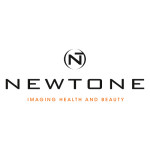Irradiating the skin is an established method for studying pigmentation, UV damage and photoageing, and for inducing erythema to assess the efficacy and determine the sun protection factor (SPF) of UV filters. In order to develop and test active ingredients that can help prevent photoageing and modulate visible pigmentation, the cosmetics industry is particularly interested in studying photoageing and cutaneous tanning reactions.
Cosmetic scientists use skin irradiation to help them understand how to prevent pigmentation reactions, which provide a model for ageing-dependent hyperpigmentation and uneven skin tone. Historically, UV radiation (UVR) with a wavelength below 400 nm was used to irradiate skin. More recently, high energy visible (HEV) or ‘blue’ light, which has a wavelength of 400-500 nm, has also been used to induce cutaneous pigmentation.
From an ethical viewpoint there are concerns regarding the irradiation of skin. Both UVA and UVB have been shown to induce DNA damage extensively, such as the formation of 8oxo-guanosin moieties for UVA and cyclobutyl pyrimidine dimer formation for UVB. UVA and UVB contribute significantly to photoageing by inducing oxidative stress events, inflammation and the up-regulation of enzymes responsible for extracellular matrix (ECM) degradation, particularly matrix-metalloproteases.
As such, UVR is still considered to be the main contributor to both cutaneous ageing and skin cancers such as squamous cell carcinoma, basal cell carcinoma and melanoma. In addition, HEV has been shown to contribute significantly to photoageing and cosmetically relevant changes in skin pigmentation.
While it usually only takes from a few seconds to a couple of minutes to induce a skin reaction with UVR irradiation due to its high energy, it takes up to an hour to induce visible signs of skin damage comparable to real life outdoor situations with HEV irradiation. Facial skin is constantly exposed to environmental threats, such as solar irradiation, pollution and weather conditions. It is therefore especially prone to photoageing, dryness and inflammatory conditions.
Many enzymes responsible for inflammation and ECM degradation are up-regulated in facial skin compared to photo-protected skin. Moreover, the skin barrier has been found to be weaker in facial skin than in other body sites. Therefore, facial skin needs special care and protection.
Taking all this into account, it seems logical that artificially irradiating skin on the face for the purposes of science or to develop commercial skin care products should be avoided and would be of ethical concern. Nevertheless, the cosmetics industry, in particular, is interested in the effects of solar irradiation on the face, and irradiation on other, surrogate body sites is considered second best.
Direct link to March Issue of the Personal care Magazine…
CONTACT
Elodie Prestat-Marquis
C.O.O







